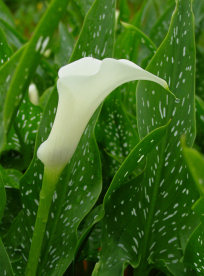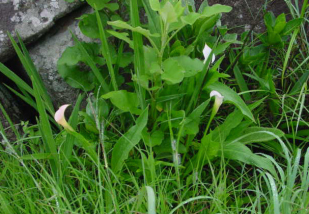Zantedeschia (Calla Lily) History
The name Zantedeschia was first established in 1826 by Sprengel, but other commonly used names for this species such as Calla and Aroides have been used for at least 400 years.
There are two important groups in this genus.
Zantedeschia aethiopica - the winter flowering varieties such as the common white arum, Green Goddess and Z. odorata. These are characterised by shiny green leaves that do not die down in winter.
This group flowers right through winter to late spring and produces a rhizome.
Summer flowering Zantedeschia - these are made up of five original remaining species in which the leaves die completely down in winter and flower during the summer months:
- Albomaculata
- Elliottiana
- Jucanda
- Pentlandii
- Rehmannii
It is from these five species that the full range of new colour hybrids have been developed. The tuber or bulb from this group is quite distinctly different from the rhizome of the winter flowering Z. aethiopica.
Zantedeschia (Calla Lily) Habitat
The genus Zantedeschia naturally occurs in the African continent and is most common in the Southern African States including the Cape Province, Lesotho, Natal, Orange Free State, Swaziland and Transvaal.
They are also found further North in Angola, Kenya, Malawi, Zambia, Zimbabwe and Nigeria. The natural habitat of the summer flowering varieties is a warm temperate climate with rain fall mainly occurring in the Winter.
Conversely the Z.aethiopica group is more commonly found in regions of summer rain fall, the plants often occurring in wet land areas.

